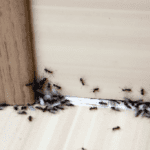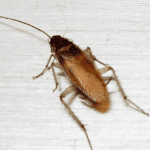Food grade and treatment methods

November 24, 2023
/
Food grade and treatment methods
Food grade and treatment methods
The food moth (Ephestia, Plodia) is usually found in homes, in food stores, mainly in bakeries and nut shops, coffee roasters, feed stores and warehouses, in confectioneries and dry food preparation and distribution warehouses. Food Moth Treatment & Biology. Moths belong to the order Lepidoptera. The food moth is not a single insect, there are many species that are similar to each other but differ from each other in morphology, biology and the species they attack and feed on. They are treated with natural methods and disinfection. Morphologically, it resembles a small gray-white butterfly with dark brown spots. It has a wingspan of up to 20 millimeters. They appear mainly in spring and summer. They are active in dim light and at night. They should not be confused with their relative the clothes moth. Clothes moths are smaller in size and whiter in color. Starchy products, flour, seeds, legumes, cereals, nuts, dried fruits, milk powder, chocolate, cocoa, animal feed, etc. Adult females deposit up to 300 eggs on or near food materials. Within two weeks they hatch and begin actively feeding. The larvae feed for about two weeks until they are fully developed and choose an area (crevices in walls, corners in ceilings) where they form cocoons. They transform into perfect insects inside the cocoons and emerge in about 30 days. The entire life cycle takes about 6 weeks. Larvae look like small white worms. They weave with threads between them pouches in which they are fed. The threads between them often cover the surface of the affected products and cause problems such as fermentation, unpleasant odors, etc. Homes are usually invaded as larvae or eggs inside packaged food where they then hatch and become perfect insects. Food moth fight The food moth must be fought at all stages of its development (egg-larva-perfect insect). Larvae are white worms. In case of severe infestation, we empty the cupboards and all the space we want to disinfect of food and food utensils and apply a spray for the larvae and a gaseous insecticide (or aerosol) for the perfect insects for a few hours. The area is then ventilated for several hours, all surfaces are stripped and cleaned before all utensils and food packaging are replaced.The easy trick to freshen up your carpets in no time
Pheromone traps are then placed as prevention and treatment in cases of re-infestation. In mild infestations, insecticides are usually not applied and traps containing glue and a special pheromone for moths are placed in various parts of the area. Moths follow the smell of the pheromone and get caught in the glue. Food moth natural treatment For the natural treatment of moths without the help of drugs, we follow the following steps:- We remove contaminated food and check each food individually for food moths. All contaminated food containing larvae or moths should be thrown out of the house immediately.
- All food is placed in airtight jars to prevent re-contamination.
- We proceed to disinfect the cupboards and put the food back in the cupboards.
- We proactively place insect traps for moths inside and outside cupboards with vulnerable foods. These traps do not contain or release any medicine and are 100% ecological. They are paper, usually triangular, and contain inside an adhesive surface with a special attractant (pheromone) or the pheromone is placed separately on the surface. The insect flies and clings to the trap and is killed. Thus we significantly reduce the moth population in just a few days.
- The natural treatment of moths as analyzed above is effective in small areas with mild infestation. In large areas or in vulnerable areas (bakeries, stores of nuts, animal feed, etc.) and in areas where the infestation is large, a combination of combating drugs and natural methods must be done.
Recent Posts
cleansecta.gr
Mosquito protection measures
cleansecta.gr




